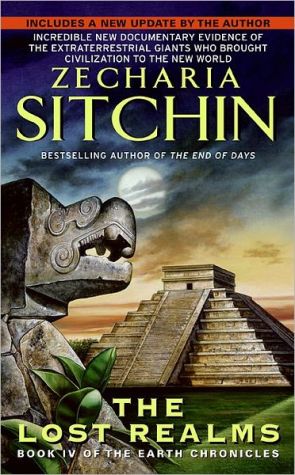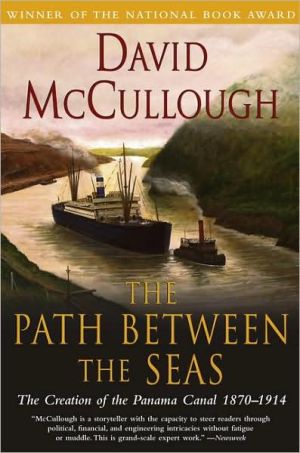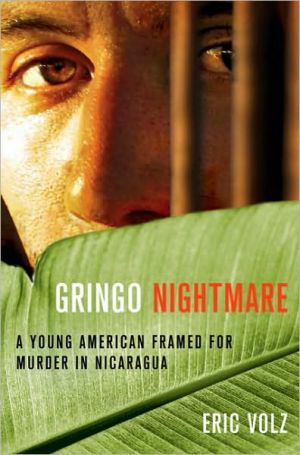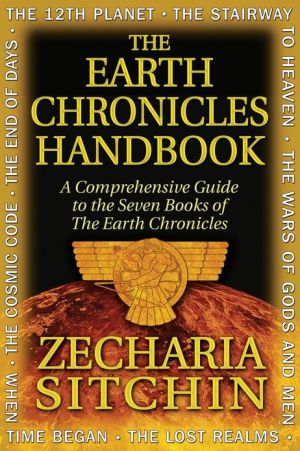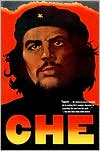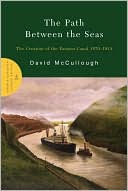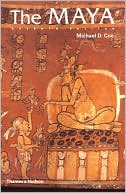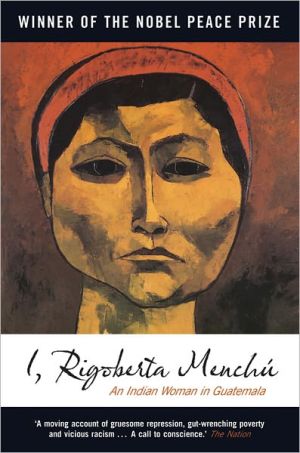Lost Realms, Vol. 4
The Earth Chronicles series is based on the premise that mythology is not fanciful but the repository of ancient memories; that the Bible ought to be read literally as a historic/scientific document; and that ancient civilizations - older and greater than assumed - were the product of knowledge brought to Earth by the Anunnaki, "Those Who from Heaven to Earth Came." The 12th Planet, the first book of the series, presents ancient evidence for the existence of an additional planet in the Solar...
Search in google:
The Lost Realms, the fourth book of Zacharia Sitchin’s Earth Chronicles series, transports readers to the pre-Columbian civilizations and ancient empires of the Americas, revealing hitherto unrecognized golden links between ancient Near Eastern civilizations and the "cities of the gods" of the Olmecs, Mayas, Aztecs and Incas. Library Journal "Exciting . . . credible . . . most provocative and compelling."
Chapter One\ El Dorado\ Nowadays Toledo is a quiet provincial city situated about an hour's drive south of Madrid; yet hardly does a visitor to Spain miss seeing it, for within its walls there have been preserved the monuments of diverse cultures and the lessons of history.\ Its beginnings, local legends teli, go back two millennia before the Christian era and its foundation is attributed to the biblical descendants of Noah. Its name, many hold, comes from the Hebrew Toledoth ("Generational Histories"); its olden homes and magnificent houses of worship bear witness to the Christianization of Spain -- the rise and fall of the Moors and their Moslem dominion and the uprooting of the splendid Jewish heritage.\ For Toledo, for Spain, and for all other lands, 1492 was a pivotal year, for a triple history was made therein. All three events took place in Spain, a land geographically known as "lberia" -- a name for which the only explanation can be found in the term lbri ("Hebrew") by which its earliest settlers might have been known. Having lost the greater part of Iberia to the Moslems, the warring splintered kingdoms in the peninsula saw their first major union when Ferdinand of Aragon and Isabella of Castile married in 1469. Within ten years of the union they launched a military campaign to roll back the Moors and bring Spain under the banner of Catholicism; in January 1492 the Moors were decisively defeated with the fall of Granada, and Spain was made a Christian land. In March of that same year, the king and queen signed an edict for the expulsion from Spain, by July 31 of that year, of all Jews who would not convert to Christianityby that time. And on August 3 of that same year, Christopher Columbus-Cristobal Colon to the Spaniardssailed under the Spanish flag to find a western route to India.\ He sighted land on October 12, 1492. He returned to Spain in January 1493. As proof of his success he brought back four corroboration of his contention that a larger, second, his command was justified, he brought with him a collection of golden trinkets obtained from the natives and tales of a city, a golden city, where the people wore golden bracelets on their arms and legs and adorned their necksand ears and noses with gold, all this gold coming from a fabulous mine near that city.\ Of the first gold thus brought to Spain from the new lands, Isabella -- so pious that they called her "The Catholic" -- ordered that an elaborate Custody be fashioned, and presented it to the Cathedral of Toledo, traditional seat of Spain's Catholic hierarchy. And so it is that nowadays, when a visitor to the cathedral is taken to see its Treasury -- a room protected by heavy grillwork and filled with the precious objects donated to the Church over the centuries -- one can see, though not touch, the very first gold brought back by Columbus.\ It is now recognized that there had been much more to the voyage than a search for a new route to India. Strong evidence suggests that Columbus was a Jew forced into conversion; his financial backers, likewise converted, could have seen in the enterprise an avenue of escape to freer lands. Ferdinand and Isabella had visions of the discovery of the rivers of Paradise and everlasting youth. And Columbus himself had secret ambitions, only some of which he expressed in his personal diaries. He saw himself as the fulfiller of ancient prophesies regarding a new age that shall begin with the discovery of new lands "at the extremity of the Earth."\ But he was realistic enough to recognize that of all the information he had brought back from the first voyage, the mention of gold was the attention-getter. Asserting that "the Lord would show him" the enigmatic place "where gold is born," he succeeded in persuading Ferdinand and Isabella to provide him with a much larger fleet for a second voyage, then a third. By then, however, the monarchs sent along various administrators and men known for less vision but more action, who supervised and interfered with the admiral's operations and decisions. The inevitable conflicts culminated in the return of Columbus to Spain in chains, on the pretext that he had mistreated some of his men. Although the king and queen at once released him and offered him monetary compensation, they agreed with the view that Columbus was a good admiral but a bad governor -- and clearly one who could not force out of the Indians the true location of the City of Gold.\ Columbus countered all that with yet more reliance on ancient prophecies and biblical quotes. He collected all the texts into a book, The Book of Prophecies, which he presented to the king and queen. It was meant to convince them that Spain was destined to reign over Jerusalem, and that Columbus was the one chosen to achieve that by being the first to find the place where gold is born.\ Themselves believers in the Scriptures, Ferdinand and Isabella agreed to let Columbus sail once more, convinced especially by his argument that the mouth of the river (now called the "Orinoco") that he had discovered was that of one of the four rivers of Paradise; and as the Scriptures had stated, one of those rivers encompassed the land of Havila, "whence the gold came." This last voyage encountered more hardships and heartbreaks than any of the previous three.\ Crippled with arthritis, a ghost of his old self, Columbus returned to Spain on November 7, 1504. Before the month was out, Queen Isabella died; and although King Ferdinand still had a soft spot for Columbus, he decided to let others act on the last memorandum prepared by Columbus, in which he compiled the evidence for the presence of a major gold source in the new lands.\ "Hispaniola will furnish your invincible majesties with all the needed gold," Columbus assured his...\ The Lost Realms. Copyright © by Zecharia Sitchin. Reprinted by permission of HarperCollins Publishers, Inc. All rights reserved. Available now wherever books are sold.
Foreword\ 1 EI Dorado\ 2 The Lost Realm of Cain?\ 3 Realm of the Serpent Gods\ 4 Skywatchers in the Jungles\ 5 Strangers from across the Seas\ 6 Realm of the Golden Wand III\ 7 The Day the Sun Stood Still\ 8 The Ways of Heaven\ 9 Cities Lost and Found\ 10 "Baalbek of the New World"\ 11 A Land of Which the Ingots Come\ 12 Gods of the Golden Tears\ Sources\ Index
\ The Beacon"A detailed account of the material he has uncovered…intriguing, fact-filled."\ \ \ \ \ Borderlands"The Earth Chronicles are a must read."\ \ \ Science & Religion News"Reflects the highest levels of scientific knowledge…"\ \ \ \ \ Washington Times"Exciting…intriguing."\ \ \ \ \ Daily Mirror"Imaginative and thought-provoking."\ \ \ \ \ UFO Magazine"Exceedingly well-documented…brilliant scholarship."\ \ \ \ \ New York Tribune"A must for all those interested in ancient mysteries."\ \ \ \ \ Washington Times“Exciting…intriguing.”\ \ \ \ \ The Beacon“A detailed account of the material he has uncovered…intriguing, fact-filled.”\ \ \ \ \ UFO Magazine“Exceedingly well-documented…brilliant scholarship.”\ \ \ \ \ Daily Mirror“Imaginative and thought-provoking.”\ \ \ \ \ New York Tribune“A must for all those interested in ancient mysteries.”\ \ \ \ \ Science & Religion News“Reflects the highest levels of scientific knowledge…”\ \ \ \ \ Borderlands“The Earth Chronicles are a must read.”\ \ \ \ \ Rosemary Decker"Sitchin's works are outstandingly different from all others that present this central theme. His linguistic skills in the languages of antiquity and his pursuit of the earliest available texts and artifacts make possible the wealth of photographs and line drawings appearing in his books from tablets, monuments, murals, pottery, and seals."\ \
